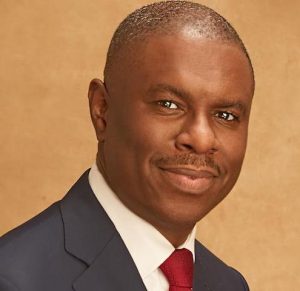These countries have more than one capital
(CNN) — The wars, revolutions and fallen empires that transformed the world map in the 20th century have a surprising beneficiary: capital cities. By 2000, that number would grow to more than 200, as new countries emerged out of the collapse of the British and French empires, the Soviet Union and Yugoslavia. Most countries chose a single city as their capital. “This is a place where politicians get together to pass laws, where the central administrative apparatus of the country are generally located,” says Gordon, a professor of urban planning at Queen’s University at Kingston, Ontario. “There are very much synergies in locating these all together.” But some countries simply decided that when it comes to capital cities, more is more. From the shores of Benin to the Kingdom of eSwatini, there are nations across the globe with two or more capital cities.Their reasons vary. When countries are formed from distinct regions, as in the case of the United States or South Africa, Gordon notes that regional competition for power can be a factor. “None of them wants their rival to get the advantage of being the seat of government,” says Gordon. “There’s very complex politics involved with this sort of thing.” The United States resolved that conflict by founding Washington, D.C., on a relatively undeveloped stretch of the Potomac River. In contrast, South Africa opted for distributing the national government between the cities of Cape Town, Pretoria and Bloemfontein. Sometimes, choosing a capital is easier said than done. The sunset in Dar es Salaam,Tanzania, is lovely to see.ShutterstockIn 1973, Tanzania declared that a new capital would be established in Dodoma, hundreds of miles inland from the colonial-era capital of Dar es Salaam. “Empires had central administrative places for each colony, which were typically on the coast, so they had good access by sea back to the imperial capital,” says Gordon. “A trend in decolonizing countries is to move the capital into the center of the country to make it more accessible to all citizens.” But the cultural pull of historic capitals can be hard to overcome. Dar es Salaam still hosts many government functions, and it wasn’t until 2019 that the Tanzanian president moved his office to the “new” capital of Dodoma. Tanzania isn’t the only country where leaders dithered over where to put the capital.”Canada took years and years to decide on Ottawa,” says Gordon. “The capital used to move every two years, because the Federation could not agree on where the capital should go.” As travelers wait out the coronavirus pandemic, armchair traveling and hopefully planning their next adventures, consider which capital of these countries to visit in future — either or perhaps both? Politics aside, Gordon sees an upside to his own country’s complicated geographical past, and to a world map whose nations maintain more than one capital city: “It’s great for Trivial Pursuit.” Benin: Porto-Novo and CotonouPorto-Novo is the official capital of Benin, where the Grand Mosque is located. ShutterstockThe energetic port city of Cotonou welcomes travelers to Benin with colorful hustle and swinging rhythms, and it comes as no surprise that the country’s biggest city is also the seat of government. The official capital, though, is an hour away in Porto-Novo. Here, the blare of big-city life gives way to tree-lined streets and historic architecture.A division of powers between the two cities has been in place since before Benin achieved full independence from France in 1960.Bolivia: La Paz and SucreWrapped in the snowy peaks of the Andes Mountains, La Paz is a show-stopper of a capital city. Cable cars drift above a tangle of downtown streets, and an independent populace fills historic squares during frequent protests. But while La Paz is the administrative capital of Bolivia, the constitutional capital is hundreds of miles away in the city of Sucre.In the early days of colonial rule, silver from the mines surrounding Sucre turned the mountain city into an Andean powerhouse. A burgeoning tin industry helped make upstart La Paz a fierce rival for economic and political power, and it remains the seat of Bolivian government to this day.Chile: Santiago and ValparaísoThe historic quarter of Valparaiso in Chile shines at night.ShutterstockAs members of Chile’s national administrative and judicial bodies watch snow fall in the mountains around Santiago, the national legislature can enjoy a colorful Pacific Ocean sunset from the city of Valparaíso. The two spectacular cities are just 72 miles away from each other by road, but they’re a world apart. In Santiago, the official capital, high-rise buildings glimmer a cool gray-blue against a backdrop of rocky summits.In the national legislature’s seat of Valparaíso, the UNESCO-listed historic center is a tumbledown gem with a rainbow palette and bohemian flair. Côte D’Ivoire: Yamoussoukro and AbidjanHolding onto the presidency for more than three decades comes with some perks.President Félix Houphouët-Boigny, who ruled Côte D’Ivoire from 1960 to 1993, took advantage of his time in office by making his boyhood home of Yamoussoukro the country’s second capital in 1983.Compared with the original capital city of Abidjan, however, Yamoussoukro remains sleepy. Abidjan is the de facto seat of government, where sleek artwork at Galerie Cécile Fakhoury meets modernist architecture and colorful markets.Czech Republic: Prague and BrnoThe President of the Czech Republic is officially based in Prague Castle.ShutterstockGothic spires and Baroque rooflines line the Vltava River in Prague, a charismatic city that’s a showpiece of Czech culture and history. Among the most impressive sites is Prague Castle, part of the city’s UNESCO-listed historic center. Founded in the 9th century, the sprawling castle remains the official office of the President of the Czech Republic. But the Supreme Court of the Czech Republic is in the country’s less-known second capital, the energetic Moravian city of Brno. Here, students fill stylish cafes, and adventurous visitors can go underground into an maze-like ossuary that holds tens of thousands of human skeletons. Kingdom of eSwatini: Mbabane and LobambaFormerly known as Swaziland, this landlocked country packs a dramatically varied landscape into less than 7,000 square miles of territory. In the mountainous west, escarpments break free of green hills that plunge to hot, dry grasslands just above sea level. Perched in the heart of the Dlangeni Hills, Mbabane is the administrative capital. If you’re hoping to catch a glimpse of the absolute monarch of eSwatini, King Mswati III, you should head to Lobamba, the royal capital. That’s where the royal family resides in the Ludzidzini Royal Residence, one of several royal residences across the country. eSwatini’s annual arts and music festival is just one stop on the African festival circuitMalaysia: Kuala Lumpur and PutrajayaPutra Mosque in Putrajaya, Malaysia, is located at the edge of a manmade lake.ShutterstockA jumble of minarets, futuristic towers and street markets, Kuala Lumpur is a maximalist immersion in Malaysian life and culture. Rooftop bars buzz through the night here, and rush hour brings traffic at a standstill.It’s the national capital, too, the seat of the legislature and the official home of Malaysia’s monarch. But even governments need a break from big-city life.In 1995, the government began constructing Putrajaya, a quieter metropolis that wraps around a massive artificial lake. What the new capital lacks in heritage it makes up for in space. With plenty of room to grow, oversized landmarks have blossomed in Putrajaya, including the bubblegum-pink Putra Mosque, which has become a sightseeing touchstone. Montenegro: Podgorica and CetinjeGrand mansions and museums testify to Cetinije’s years as a seat of power in Montenegro, and the President’s official residence is still in the city’s Empire-style Blue Palace. Now designated the Old Royal Capital, Cetinije lost prominence to the larger city of Podgorica — then called Titograd — after the Second World War.Now, laid-back Podgorica is where the official government is located. Known as Birziminum in Roman times, the city morphed into Slavic Ribnica and Socialist Titograd before becoming Podgorica in 1992 as Yugoslavia crumbled. Netherlands: Amsterdam and The HagueTraditional houses line canals in Amsterdam, the official capital of the Netherlands.ShutterstockWith historic canals, ultrahip locals and a reputation as one of Europe’s hottest party spots, Amsterdam has plenty of name recognition. But even though the Netherlands’ constitution designates the city as the country’s capital, the real work of governing takes place in The Hague.The Netherlands’ main governing bodies, including the states general, executive branch and supreme court, have been located in this dignified city for centuries. To see the city’s inner workings, join a guided tour of Het Binnenhof, a historic complex of buildings clustered around the Gothic Knight’s Hall, where the King of the Netherlands still comes for his yearly speech from the throne. South Africa: Pretoria:,Cape Town and BloemfonteinThis is the only country to have three capital cities, a unique arrangement designed to share power across regions. With a spectacular location between the shoreline and Table Mountain, Cape Town was the capital of Britain’s Cape Colony and remains the legislative capital of South Africa. By dividing the remaining branches of government between Pretoria and Bloemfontein, the emerging Republic of South Africa helped distribute power across the new country. Each one has its charms: Pretoria is known for the exuberant jacaranda blooms that appear each September, while Bloemfontein exudes laid-back hospitality.Sri Lanka: Colombo and Sri Jayawardenepura KotteBeaches line the urban waterfront of Colombo, home to Sri Lanka’s national and executive bodies of government.ShutterstockColombo sprawls maze-like along the Sri Lankan coast, reeling past bright bazaars, colonial-era landmarks and golden-sand beaches. It’s a city with gutsy magnetism, a figurehead that’s the starting point for most travelers exploring the island country.The national and executive bodies of government are in Colombo, too, but the official capital is in nearby Sri Jayawardenepura Kotte, often called Kotte. There, the modern Sri Lankan Parliament Building is located on an artificial island in the middle of the manmade Diyawanna Lake. Tanzania: Dar es Salaam and DodomaSometimes moving out takes years. In 1973, the Tanzanian government announced it was moving from the coastal capital of Dar es Salaam, and identified Dodoma as the perfect central location for a new capital. Despite a suite of grand buildings and wide streets in Dodoma, however, many key government functions remain in Dar es Salaam. Maybe it’s just too hard to walk away from Dar es Salaam’s cultural diversity and Indian Ocean breezes; there’s even a gorgeous marine reserve just off the coast here.But after nearly half a century of a move-in-progress, Tanzania’s government might finally make the jump to Dodoma. In October 2019, President John Magufuli moved his office there.







